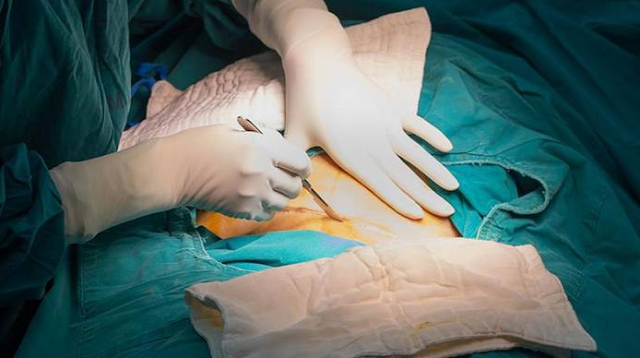Cesarean delivery, also known as a C-section, is a surgical procedure in which the baby is delivered through an incision in the mother's abdomen and uterus. It is typically performed when vaginal delivery is not considered safe or feasible. Here are some common situations in which a cesarean delivery may be recommended:
- The baby is in distress. This could be due to a number of factors, such as a low heart rate, umbilical cord compression, or meconium (baby's first stool) in the amniotic fluid.
- The mother has a medical condition that makes vaginal delivery unsafe. This could include conditions such as high blood pressure, diabetes, or placenta previa.
- The baby is in a breech position. This means that the baby is bottom or feet first instead of head first. Breech babies are more likely to have complications during vaginal delivery, so a cesarean delivery may be recommended.
- The mother has had a previous cesarean delivery. The risk of uterine rupture increases with each cesarean delivery, so a repeat cesarean delivery may be advised.
- The labor is not progressing. This could be due to a number of factors, such as a narrow pelvis or a baby that is not in the correct position.
In some cases, a cesarean delivery may be performed as a planned procedure, such as when the mother has chosen to have a scheduled cesarean delivery or when the doctor believes that it is the safest way to deliver the baby. In other cases, a cesarean delivery may be an emergency procedure, such as when the baby is in distress or when the mother's health is in danger.
Cesarean delivery is a major surgery, and it is important to discuss the risks and benefits with your doctor before making a decision. However, for many women, a cesarean delivery is the safest way to deliver their baby.
Here are some of the risks associated with cesarean delivery:
- Infection. There is a small risk of infection at the incision site.
- Bleeding. There is a small risk of excessive bleeding.
- Injury to other organs. There is a small risk of injury to the bladder, bowel, or other organs.
- Complications with future pregnancies. There is a slightly increased risk of complications with future pregnancies, such as placenta previa or uterine rupture.
Despite the risks, cesarean delivery is a safe and effective way to deliver a baby. If you are considering a cesarean delivery, talk to your doctor about the risks and benefits so that you can make an informed decision.

